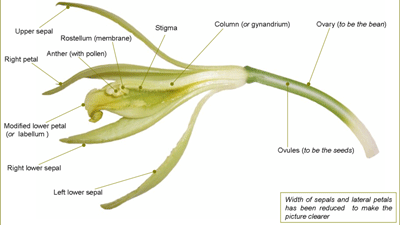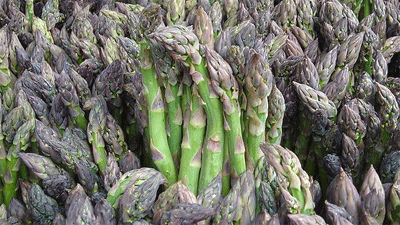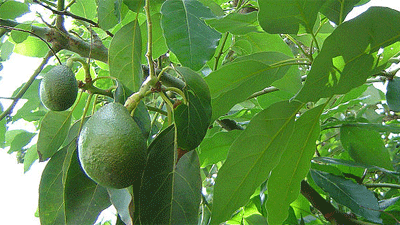The Greek love goddess Aphrodite was known for making potions that stirred sexual desires, and helped to ease anxieties relating to performance, as well as increasing the chances of fertility. And because of this lusty distinction, certain foodstuffs were coined as “aphrodisiacs” throughout time. The Greeks were the first to actually make a list of foodstuffs that increase sexual arousal in humans, even though more food is available now than it ever was in ancient times. Of course, mythology plays a big part in what foods are considered to be sacred in terms of sexual arousal. Nonetheless, try some of these food items this Valentine’s Day–in an effort to make your sweetheart horny. Think of it as early-day Viagra.
1) Basil
 |
This aromatic Old World herb, called the “royal herb” by the Greeks, is believed to have strong aphrodisiacal powers. There are many varieties of basil grown throughout the world, dating back to ancient times in the Mediterranean, Africa, and Southeast Asia. The most common varieties are sweet basil, lemon basil, and the red-stemmed Thai basil. This licorice-flavored (anise, if you will) herb is quite versatile, but it was the Italian creation of pesto that made the herb popular in America. But, besides making pesto, you can put your honey in the mood with a plate of pan-seared sea scallops drizzled with basil vinaigrette or a caprese salad– made with fresh mozzarella, sliced tomato, and fresh basil leaves.
2) Vanilla
 |
It is believed (mostly by those in the Latin World) that the very aroma of vanilla can evoke serious sexual desire. Vanilla extract is the most commonly used form of vanilla, which is made from dried vanilla bean pods. Mexican vanilla extract is generally the best. It has a dark, amber hue and a distinct sweet mustiness that seems to linger in the kitchen. A dish of silky vanilla flan or fresh whipped cream redolent of vanilla is a great way to lure your lover into bed. For the more adventurous types, try scraping (grating) your own dried vanilla beans and making ice cream, to go with that devilishly decadent chocolate cake.
3) Asparagus
 |
Besides being an obvious phallus-like symbol, asparagus is believed to possess aphrodisiacal properties. This Old World leafless vegetable was extremely common in the Mediterranean before making an appearance on the American agricultural scene during the late 19th century. One of the reasons why asparagus is so expensive is that it takes three years for a crop to become productive. It’s most commonly harvested in the spring, especially in northern climes, but asparagus gets harvested year-round in California and Mexico–places that don’t experience major seasonal changes. The young, tender spears are the ones that are picked because the larger spears tend to be woody. (No pun intended. Okay. Maybe some.) Try lightly blanching some asparagus and drizzling it with fresh hollandaise. This, paired with a bottle of bubbly, should do the trick. But your stinky asparagus piss might be a turn off!
4) Avocados
 |
Speaking of male genitalia: The Aztecs thought that avocados looked like human testicles. The Aztec word for avocados was “ahuacuati,” which loosely translates to “testicle tree.” I guess these green, shriveled sacks that hang from thick branches can bring on sexual thoughts, at least in males, who tend to be obsessed with their genitalia. Regardless of this comparison, the silky fruit of the avocado is definitely sensuous by nature. A piece of grilled salmon topped with a dollop of velvety avocado puree is not a bad way to start a romantic evening. And a bowl of good guacamole usually puts them in the mood, as well.
5) Chocolate
Chocolate is often associated with romance, especially on Valentine’s Day when millions of Americans swarm to chocolate shops for truffles and other chocolate treats. But chocolate is more of a romantic notion than it is a true aphrodisiac. Chocolate comes from the cacao tree, which has a storied history in Latin America–from southern Mexico to Brazil. Aztecs used chocolate (usually hot chocolate mixed with vanilla and a slight essence of chili pepper) in their ceremonial rituals, most of which didn’t deal with evoking sexual desires. The Europeans were eventually introduced to the splendors of chocolate, thanks to Chris Columbus who brought the substance from New World. Chocolate in its purest form is rather bitter; it’s the Europeans and Americans that added sugar to the stuff, making it a sweet treat.
6) Almonds
This versatile tree nut has been cultivated since prehistoric times, in and around the Mediterranean. Almonds belong to the same genus as apricots and cherries, although, the nut itself is the fruit. Even though almonds have a long agricultural history in Spain and Italy, America is now the largest producer of almonds in the world. It is said that the almond’s sweet meat has strong aphrodisiacal powers, especially when turned into treats such as marzipan and nougat. There’s even a mention of almonds in the Bible, where the flowering tree gets some good play. (Obviously not in the processed form, though.) But don’t expect to find a mention of the nut’s sexual powers within the pages of the Big Book. That association was later made by Romans and early Spaniards.
7) Oysters
Oysters are probably the most documented aphrodisiac, at least in the Western World, where they have long been considered to provoke lust in those who consume them. These bivalve mollusks were highly revered by the Romans who often ate the briny, little buggers to increase their libidos. Plus, they believed that a shucked oyster (on the half-shell) resembled a vagina. Most oysters that are farm-raised in America today come from European and Asian lineage, except for the Olympia oyster, which is the only native oyster on the West Coast. No matter how you eat them (raw, smoked, baked, or pan-fried), oysters should help to get that rusty libido going again. Yet purists believe that eating them raw is the only way to get the full effect of this fabled shellfish.
